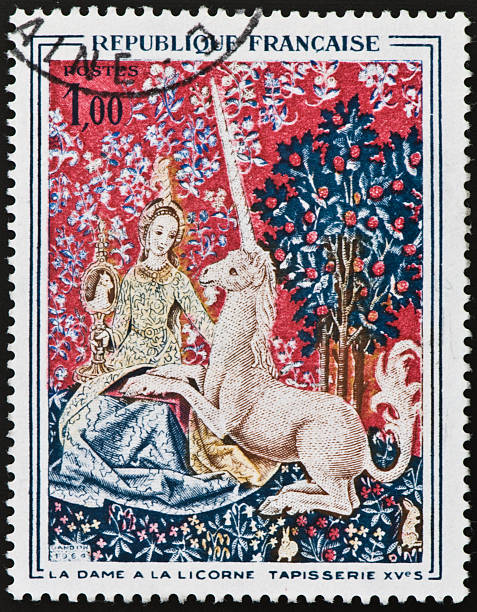What is the unicorn tapestry
The Unicorn Tapestries depict a hunting expedition, arguably the most famous worldwide. Hunters pursue a mythical Unicorn through a forest. The tapestries in this series depict different scenes in the hunt. They show the various stages in the chase, the Unicorn’s capture, and its subsequent death. The tapestries include Unicorns and other animals, plants, and figures.
These tapestries are particularly fascinating because of their rich interpretation and symbolism. These tapestries portray the Unicorn as an elusive and noble creature hunted and captured by men, only to be killed and returned.
What is the significance of the unicorn tapestries
Unicorn Tapestries have been praised for their weaving technique, vivid colors, and intricate designs. The intricate patterns, detailed borders, and meticulous renderings are all part of the Unicorn Tapestries. Gold and silver threads are used to enhance their beauty and richness.
These tapestries have a special place in art history and continue to fascinate viewers with their mysterious allure. These tapestries are the pinnacle of medieval textile art and a testament to their weavers’ skill and craftsmanship.
How many tapestries are there in the series of unicorn tapestries
The Unicorn tapestries are a collection of seven different tapestries. Each tapestry depicts a different scene from the mythical hunt for unicorns. The seven tapestries form a coherent narrative that describes various stages of the quest, the capture of the Unicorn, and its ultimate demise.
The order of the Unicorn Tapestries
The Hunt Starts: This tapestry shows hunters and their hounds in a forest.
Unicorn Purifies Water at Fountain: The unicorn purifies water using his horn. It symbolizes purity and rejuvenation.
The Unicorn is Attacked as it Crosses the Stream: The hunters attack the unicorn while he crosses the river to flee – a symbol of the triumph of evil over good.
Unicorns Defend Themselves: The unicorn defends itself fiercely against the hunters and displays strength, resilience, and tenacity.
The Unicorn is Tamed: A maiden rests the unicorn on her lap while dogs lick his wounds, symbolizing its submission and taming.
The Unicorn Killed & Brought Back to the Castle: Here, the hunters capture, kill, and bring back the unicorn to the castle. This is often symbolic of Christ’s Passion.
The Unicorn Rests In A Garden: The final piece depicts the Unicorn alive and well, happily enclosed in an enclosure. This represents marriage and fertility.
These seven unicorn tapestries create a narrative telling the tale of the hunt for unicorns. Each tapestry adds to the history and captures moments from the search. It also showcases symbolism, artistry, and the Unicorn Tapestries.
When was the unicorn tapestry made
The Unicorn Tapestries date back to the late 15th Century. The tapestries were made between 1495-1505, corresponding to the late medieval or high Renaissance periods.
What other name is there for the unicorn tapestries
The “Unicorn” Tapestries is also known as the “Hunt of the Unicorn.”
What is the meaning of the Unicorn Tapestries
Unicorn Tapestries have a rich symbolism that has been the subject of much interpretation and speculation. The exact meaning is still a matter of debate in the art world. However, several theories attempt to explain the symbolism of these antique tapestries.
The meaning of the unicorn tapestries can be interpreted in many ways
Christian Allegory One interpretation suggests the Unicorn Tapestries have Christian allegory themes. The Unicorn is often seen as the symbol of purity and Christ himself. It could represent either the Incarnation or the Passion of Christ. The hunt for and capture of the Unicorn may represent the Crucifixion. Its death and resurrection could also be a symbol of Christ’s Resurrection.
Medieval Romance & Chivalry: These tapestries reflect medieval romance and chivalric values. The tapestries tell a story of noble pursuits, with knights and hunters engaged in a search for a mythical beast. The tapestries are a celebration of chivalry and courtly love, as well as the pursuit of unattainable goals.
Moral and Moralizing: The tapestries can also convey moral or didactic messages. The death of the Unicorn could represent the fleeting nature of worldly delights or the results of sinful acts. This may be a morality tale intended to encourage virtuous behavior and warn against temptation.
Marriage and Fertility: According to another interpretation, the unicorn symbolizes fertility. The tapestries show a union between a unicorn and a young girl. The hunt can be seen as a symbolic quest for love or a journey to the marital union.
Secular Aristocratic symbolism: These tapestries could also represent the luxury of the aristocracy in the medieval period. These tapestries could be seen as a symbol of wealth, luxury, and power. They would show their patrons’ status, ability, and willingness to commission such elaborate art pieces.
The Unicorn Tapestries have yet to be definitively understood. These interpretations may be speculative. The enigmatic quality of the tapestries adds to their appeal, as it allows viewers to interact with their beauty and symbols on a subjective and personal level.
Where was the unicorn tapestry woven / from where did it come
Scholars debate the exact origin and place of production of unicorn tapestries. There are a few theories about their ancestry.
Based on stylistic similarities and similarities to other Flemish Tapestries from the period, some scholars believe that the tapestries may have been woven in the southern Netherlands. Some scholars suggest that the tapestries were woven in southern (currently referred to as ‘Belgium’) based on stylistic characteristics and similarities with other a nazmiyalantiquerugs.
Who originally commissioned the Unicorn Tapestries
Uncertainty remains about the patronage and purpose of the unicorn tapestries. Given the exquisite craftsmanship and the cost of creating significant and intricate tapestries, the tapestries were likely commissioned by wealthy nobles or royal patrons.

